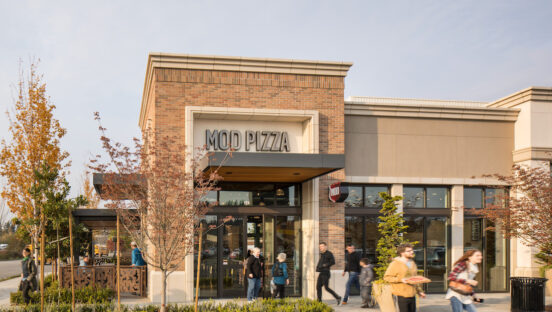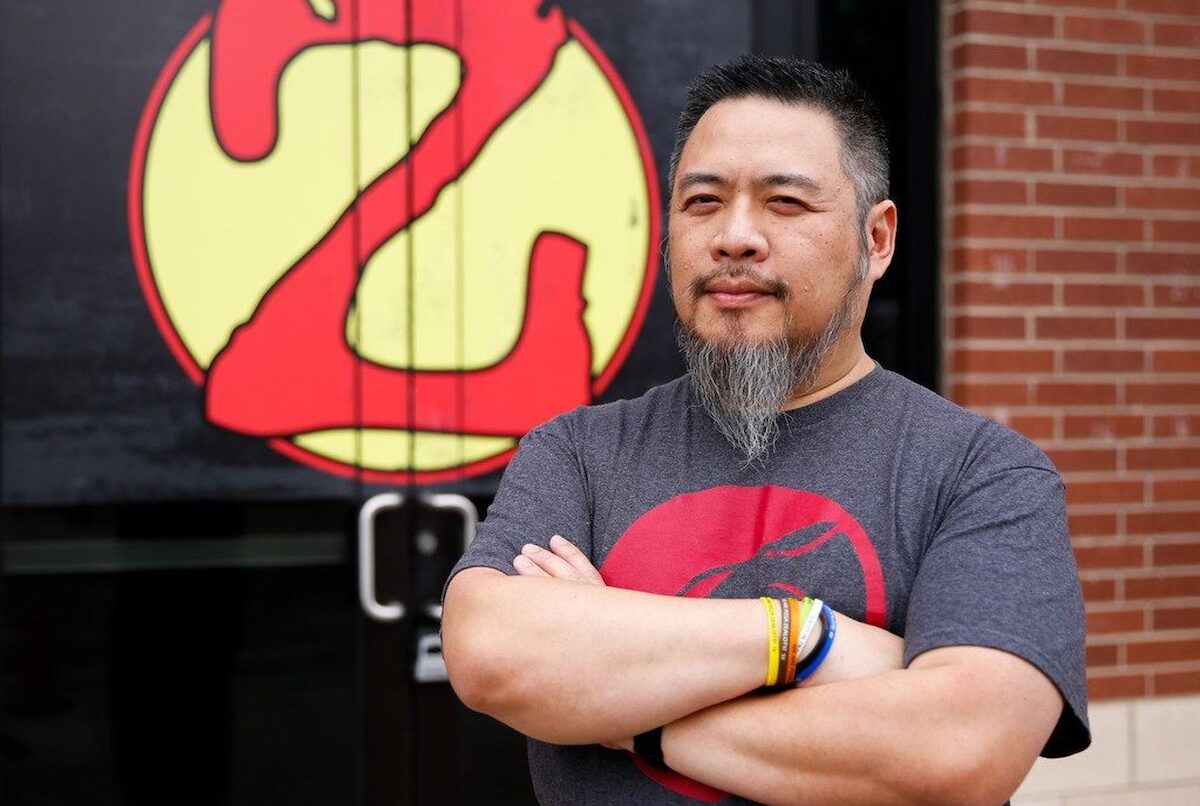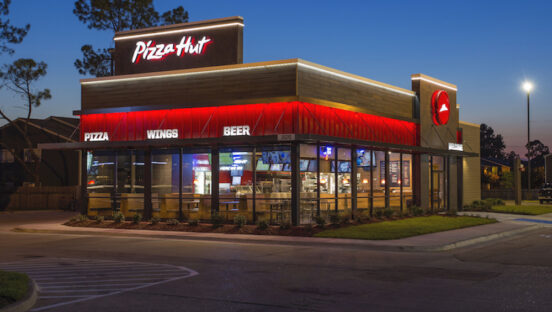Featured in the Pizza Power Report 2024:
-
- Pizza Power Report 2024: Are We Living in a Golden Age of Pizza?
- How the Leading Chains Are Using AI to Sell More Pizza
- Old-School Operators Make Peace with Robots
- Watch Your Back, Papa Johns! Top Pizza Chains Clash for Supremacy
- Loyalty Programs: Why Points-for-Pizza Is Not Good Enough
- Why Gas Station Pizza Is Your Next Big Competitor
- Culture Is Key to Attracting High-Performing Young Workers
- The 25 Most Critically Acclaimed Pizzerias in the U.S.
- The 25 Most Popular Pizzerias in the U.S.
- Ranking the Top 10 U.S. Pizza Brands by Units and Sales
- Which Pizza Chains Are Dominating the Internet?
- Which Independent Pizzerias Are Dominating the Internet?
Click here to download the full 2024 Pizza Power Report.
By Rick Hynum
There was a Steven Spielberg film many years ago called A.I., all about a little android boy uniquely programmed to love. Sadly, the humans in his life didn’t love him back. When it comes to new technologies, we are like that sometimes: skeptical, suspicious, maybe a little afraid. And in 2023, there was a lot for technophobes to worry about. For starters, it was generative AI’s “breakout year,” according to the annual McKinsey Global Survey, released in August. One-third of the survey’s respondents in the business world said their organizations “are using generative AI regularly in at least one business function.” The report noted that “experimentation with the tools is already relatively common, and respondents expect the new capabilities to transform their industries.”
Obviously, that includes the restaurant biz. While the AI overlords haven’t taken over our kitchens yet, generative AI and natural language processing (NLP)—which, for example, powers chatbots and enables computers to understand and process orders at a drive-thru—are on the verge of becoming indispensable for many quick-service restaurant chains. But these technologies aren’t infallible. In a TikTok video posted earlier this year, two young women at a McDonald’s drive-thru watched in amazement as the AI system kept adding more and more McNuggets orders to their total—tallying at least 26, for a cost of more than $325, before the video cut off. Fortunately, they thought the whole thing was funny, but not everyone is amused by these little glitches: Another TikTok user complained about a McDonald’s bot that inexplicably turned her order for one Coke into nine sweet teas. “I did not ask for this!” she wailed.
We might not have asked for AI, but here it is. And it will change everything, so we might as well figure out how to use it to sell more pizza. Looking back at the past year gives us a pretty good idea as to what 2024 holds for pizzeria operators, and the future looks very (artificially) bright indeed.
Who’s Running Point in the AI Revolution?
You might assume Domino’s is leading the way in bringing artificial intelligence (AI) to the pizza industry. After all, the chain’s executives have proclaimed that Domino’s is, first and foremost, a technology company. But, while Domino’s isn’t exactly lagging behind—it has been using DOM, an AI-powered ordering assistant bot, for years—other smaller brands have also been running point in the AI revolution.
Foremost among them: Jet’s Pizza, the Detroit-style chain headquartered in Sterling Heights, Michigan, with about 440 locations in 23 states. Jet’s says it has fulfilled more than 5 million orders with the OrderAI Text and OrderAI Talk systems from HungerRush. The text-to-order option began in 2019, and, as of July 2023, 4 million orders had gone through. Moreover, in December 2021, the brand started piloting Order AI Talk, an AI-powered chatbot. It’s now available at 240 stores in 20 states and has already surpassed 1 million orders. In July, the company said it was earning $6 million per month using AI tech.
Aaron Nilsson, Jet’s chief information officer, noted at the time that AI has made employees’ jobs easier, too. “One of the biggest concerns we were hearing from franchisees was getting enough applications in the door, so we addressed this with technology,” he said. “OrderAI can take infinite phone calls, which is instrumental in getting employees off the phones and back into the fun part of the job—making delicious pizzas.”
Nilsson added that Jet’s has “seen less turnover as work stress has been reduced. Technology has created a better work environment and, let’s be honest, it’s really fun for our customers to use.”
“OrderAI can take infinite phone calls, which is instrumental in getting employees off the phones and back into the fun part of the job—making delicious pizzas.”
—Aaron Nilsson, Jet’s Pizza

AI-based ordering has generated $6 million per month in sales for Jet’s Pizza, the brand said in July. Photo courtesy Jet’s Pizza.
But Domino’s is very much in the AI game, too. In October, the brand announced a new five-year partnership with Microsoft “to create the next generation of pizza ordering and store operations with generative AI technology and cloud computing power.” Domino’s revealed that it had been experimenting with data and AI capabilities to “make store operations smarter, simpler and more robust.” The Microsoft partnership’s goal: develop a generative AI assistant that will streamline day-to-day managerial tasks, like inventory management, ingredient ordering and staff scheduling. It will also help with pizza preparation and quality control and could free up store managers to spend more time with customers and team members.
“The rapid advancement of artificial intelligence…will revolutionize not just the tech industry but the restaurant industry as well, and pizzerias are no exception,” says Bobby Lawson, publisher and technology editor at Earthweb, an online business, technology and lifestyle publication and resource discovery platform.
So what are AI’s potential applications for pizzeria operators? “For marketing, AI can be used for personalized customer engagement,” Lawson says. “They can use artificial intelligence to collect data about customer feedback, order history and preferences. They can then use this to create a more personalized marketing campaign and send emails with recommendations based on the customer’s order history and preferences.”
“[AI is] a tool we’re employing to help drive efficiency and assist with brainstorming. But unless we’re creating something wildly imaginative, like a mac and cheese robot, it will be used day to day as needed.”
—Maria Trujillo, Marco’s Pizza
Additionally, Lawson adds, “AI can make operations a smoother process if it’s used to optimize inventory management. With all the data that AI can collect, it will be able to track inventory levels. The AI system can then be trained to generate reorder points, assisting pizzerias in reducing food waste and ensuring they have the right stock on hand to create their customers’ favorite pizzas.”
Kat Campbell, a data scientist and author of a Substack newsletter called Data Science and Machine Learning 101, notes that AI can drill down to uncover and employ data in surprising ways, such as “analyzing past consumption patterns and factoring in variables like local events, weather forecasts and seasonal trends” to optimize inventory and control food costs. She also recommends using AI-driven analytics “to understand customer preferences better, tailoring the menu based on popular choices and even predicting future culinary trends.”
Coppell, Texas-based Cicis Pizza found a more novel use for the technology this past summer: leveraging AI as a social media “intern.” Over the summer, Cicis’ marketing team used ChatGPT and Midjourney to create social media posts, including graphics and captions, across all platforms. The first post created by the “AI intern” went live on Instagram on July 17. It depicted an AI-generated robot bearing pizzas and a simple caption: “Meet our AI intern slicing up pizza posts this month at Cicis!”

Cicis Pizza / Instagram
As a copywriter, AI leans a bit too hard into clichés, but it generates some splendidly weird graphics; after all, it lacks the artistic and design sensibilities that humans possess and often doesn’t understand or prioritize esthetic principles. That’s just part of the fun. Case in point: Cicis’ July 19 post, depicting a football player leaping above a crowd of fans, mouth open wide to bite into a floating pizza—even though he’s still wearing his helmet. (And a couple of fans have caveman-like eyebrows, but is that really so off-base?)
All in all, the Cicis initiative was successful, but it won’t replace real, live social media managers anytime soon, says Maria Trujillo, the brand’s senior vice president of marketing. “When it comes to our in-feed content for Facebook and Instagram, posts featuring our AI intern’s creations yielded average engagement rates that were at least 15 times higher than the industry average,” she explains. “For us, these results are in line with our typical social engagement, so, while not a huge boost from a metrics standpoint, it successfully opened up new creative possibilities, allowing us to try new things without any additional investment—like reimagining our brand mascot as an anime character.”
Moving forward, Trujillo adds, “[AI is] a tool we’re employing to help drive efficiency and assist with brainstorming. But unless we’re creating something wildly imaginative, like a mac and cheese robot, it will be used day to day as needed. Our food means everything to us, so even if AI could replicate our pizza’s appearance perfectly [in a social media graphic], we wouldn’t want to do that. Authenticity matters, and we often went back in and incorporated our actual product shots into the AI images so that it better reflected the food our customers could find on the buffet.”
Regardless, Nilsson believes AI tools should no longer be thought of as optional for restaurant chains. “We see them as key competitive differentiators that position us as a market leader,” he says. “With this type of technology, we’ve been able to significantly elevate our brand.”
Cicis’ marketing team will continue to incorporate AI into social media “when it makes sense,” Trujillo says. “However, like in all industries, I’m sure AI will find its way into every little corner of our operations at some point. But there are no grand plans just yet.”













